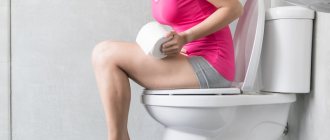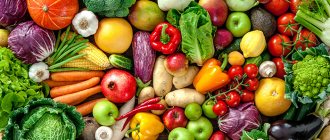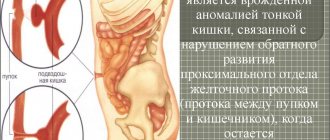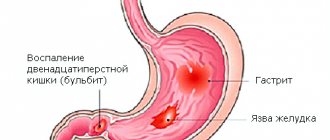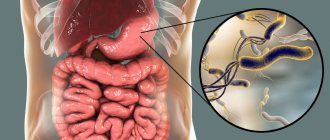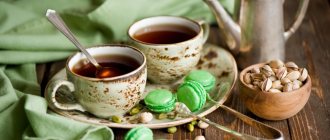Symptoms and treatment of steatorrhea
Minor steatorrhea may not cause any discomfort in the patient. Or they will appear so weakly that they will not attract much attention. However, a large accumulation of soaps and fat in the feces of a child and an adult usually manifests itself as severe symptoms, which, if ignored, can lead to dangerous consequences.
So, steatorrhea may be accompanied by:
- dyspeptic disorders;
- dehydration of the body;
- strong thirst;
- dry mouth;
- deterioration of skin condition;
- heartburn;
- flatulence;
- bloating;
- pain in the stomach, pancreas, kidneys (depending on the cause of the pathological abnormality);
- heaviness and discomfort in the right hypochondrium, etc.
The symptom complex of steatorrhea can be varied and multicomponent. It depends on what exactly causes its occurrence. But one thing needs to be remembered: if the condition gradually or sharply worsens, it will not be possible to do without the help of a doctor.
Diagnostic features
Steatorrhea can also be detected by the patient himself. If there are small amounts of fatty acids in the stool, then after defecation you can see a greasy mark on the wall of the toilet. But with high lipid content in excrement, a more serious picture is observed. Feces are difficult to flush away and leave visible shiny stains on the toilet that require effort to remove.
With such symptoms, you should contact a therapist or gastroenterologist. After the initial examination and survey, the specialist will prescribe:
- stool lipid profile;
- urine and blood tests;
- colonoscopy;
- biochemical study for pancreatic enzymes;
- liver tests;
- Ultrasound of the liver, kidneys;
- MRI of the intestines and biliary system organs.
This is only an approximate examination scheme for steatorrhea. The doctor prescribes procedures strictly individually, after which he makes a diagnosis and, if necessary, prescribes therapy.
How to treat
The main condition for the treatment of diseases accompanied by this deviation is strict adherence to the diet. Fatty foods, coffee and other products that create a load on the diseased organ are excluded from the menu. For enzyme disorders, replacement drugs are used - Festal, Creon, Pancreatin, etc.
At the same time, it is recommended to take vitamin supplements, since vitamin deficiencies often develop with this disorder. The use of folk remedies without the consent of a doctor is not recommended. If you neglect this condition, dangerous consequences will not be long in coming.
Symptoms of steatorrhea
Long-term removal of fats from the body along with feces affects the condition of all systems and organs.
The main symptoms are frequent urge to defecate, diarrhea with copious loose stools. Constant diarrhea leads to dehydration of the body, with all its inherent signs (dry skin, constant thirst, etc.). Feces have an oily consistency, are greasy, and are difficult to wash off with water. These symptoms include nausea, heartburn, belching, bloating and rumbling in the intestines, and dry cough. Less commonly, pain appears in the upper abdomen.
Steatorrhea is accompanied by diarrhea, frequent bowel movements, and dyspepsia
In the absence of timely adequate treatment for the disease that caused steatorrhea, disorders of the cardiovascular, endocrine, genitourinary and nervous systems may develop, which is caused by a secondary disorder of protein metabolism. A decrease in protein content occurs for several reasons: cavity digestion and protein absorption are impaired. Also, with malabsorption, the permeability of the intestinal barrier often increases and protein excretion occurs with loss through the intestines.
Compliance with the rules of preparation and collection technique affects the reliability of the lipid profile result.
Moderate protein losses occur with malabsorption of any origin. In this case, the patient complains of general weakness and decreased performance. Protein metabolism disorders lead to a progressive decrease in body weight, a decrease in the amount of total protein and albumin, ascites, and hypoproteinemic (protein-free) edema.
Steatorrhea is also accompanied by vitamin deficiency. The development of hypovitaminosis is explained by impaired absorption in the intestines, as well as the property of a number of vitamins to be absorbed only in the presence of fats. Severe malabsorption is accompanied by impaired metabolism of almost all vitamins, but clinically pronounced hypovitaminosis appears quite late. Deficiency of B vitamins appears earlier than others. The absorption of fat-soluble vitamins - A, D, E, K - is significantly impaired. These vitamins normally have the same absorption mechanisms as triglycerides. Their absorption changes with the inferiority of the bile micelle (chronic biliary insufficiency, dysbiosis), increased hydrostatic pressure in the intestinal lymphatic system (Whipple's disease), and impaired metabolism of enterocytes.
Hypovitaminosis can have the following manifestations:
- dizziness;
- pain in the spine and joints;
- convulsive conditions;
- swelling;
- dryness and pallor of the mucous membranes;
- skin itching;
- decreased visual acuity;
- dullness and brittleness of hair, peeling nails;
- glossitis, stomatitis (including angular), looseness and bleeding of the gums.
Absorption of fat-soluble vitamins occurs predominantly in the small intestine, therefore, in pathological conditions accompanied by atrophy of the mucous membrane of the small intestine, the process of their assimilation is disrupted. At the same time, the presence of pancreatic lipase for the absorption of this group of vitamins is not necessary, therefore, with pancreatic insufficiency, there is usually no vitamin deficiency.
In the absence of timely adequate treatment for the disease that caused steatorrhea, disorders of the cardiovascular, endocrine, genitourinary and nervous systems may develop, which is caused by a secondary disorder of protein metabolism.
Despite the absence of specific symptoms of hypovitaminosis, one must keep in mind that vitamin E is one of the most powerful antioxidants, vitamin D regulates the absorption of calcium in the intestines, and vitamin K is a blood clotting factor, so even their hidden deficiency must be corrected.
Cause of fat in stool
Constantly loose stools in an adult.
When taken for a long time, it is possible to disrupt the processes of fat metabolism, which are not restored even after the end of the treatment course with their use. Fatty stool in an adult can result from:
- Systemic dermatoses, in which, in addition to the skin, internal organs are also affected.
- This type of diarrhea occurs in patients suffering from lichen planus or eczema.
- Pathologies in the functioning of the endocrine glands, such as hyperthyroidism or Addison's disease.
- Genetic diseases that impair the absorption and transfer of triglycerides.
The condition may occur in later stages. The causes of fatty stool should be sought in cholestasis, that is, a violation of the outflow of bile due to the pressure of the enlarged uterus on the gallbladder. In this case, the woman’s stool is discolored and foul-smelling, and the mucous membranes are yellowish.
Steatorrhea can be:
- Pancreatic, caused by dysfunction of the pancreas, in particular due to insufficient secretion of the lipase enzyme responsible for the breakdown of fats.
- Intestinal, which occurs when the absorption properties of the intestine are impaired.
- Nutritional or nutritional, developing with excessive consumption of fatty foods that the gastrointestinal tract is not able to digest.
According to another classification, steatorrhea is divided into categories depending on what is contained in the stool: neutral fats; soaps and fatty acids; mixed set of exchange products.
Other etiological factors
The causes of the appearance of phospholipids in feces may be diseases of the endocrine glands.
- The most common provoking factors are hypothyroidism and Addison's disease (adrenal insufficiency).
- Abetalipoproteinemia (impaired absorption and transport of lipids), cystic fibrosis (the secretions of all glands are highly viscous and thick) and cealkia (a disease in which gluten is not completely broken down) are congenital conditions that lead to the appearance of neutral fat in the feces of infants.
The appearance of phospholipids in feces can accompany psoriasis and eczema, as well as long-term use of laxatives and drugs used for weight loss. What are the reasons? Salts of fatty acids in feces are a pathological condition. Specific factors are determined by further diagnosis. Among the most common options are the following:
- Disruption of the pancreas. To break down neutral fats in the intestines into fatty acids and glycerol, the pancreas produces a special water-soluble enzyme - pancreatic lipase. If the functioning of this organ is disrupted, there is a corresponding deficiency of lipase in the body. Triglycerides are not completely broken down. Why may neutral fat be present in the patient’s stool?
- Bile acid deficiency. With insufficient flow of bile into the intestinal tract, a violation of the breakdown and absorption of fats is observed. And these elements are subject to the action of digestive enzymes only if they are in a state of thin emulsion. Bile mixes fat masses with water, which is necessary for their further digestion. If there is not enough bile, then the fat droplets remain large, so aqueous solutions of enzymes can no longer mix with them. The consequence of this is the detection of fatty inclusions in the stool.
- Impaired absorption of fat in the intestinal tract and its accelerated elimination from the body. The bolus of food (hummus) moves through the intestinal tract due to contraction of the intestinal walls. If its motor function is impaired, this leads to accelerated movement and removal of food masses from the intestines. Accordingly, in this state of affairs, fats do not have time to be completely absorbed. This changes the appearance of feces - they become light, grayish, acquire an oily sheen, and a foul odor that is not characteristic of feces.
- Excessive fat content in the diet. This can also lead to disruption of the small intestine. Especially when consuming refractory fat - for example, lamb fat.
- A large amount of fatty components in case of obstruction of the lymphatic tract.
- Taking castor oil and other types of rectal suppositories.
Violation of vitamin absorption during pregnancy leads to problems:
- With blood clotting and possible bleeding during labor.
- In the development of the musculoskeletal system of the fetus.
- Deterioration of visual acuity in mother and child, as well as dry skin and mucous membranes.
- You can help a pregnant woman with the help of medications, folk remedies and diet therapy.
Steatorrhea: what is it?
The described pathology in most cases is a complication of disorders of the gastrointestinal tract.
note
Women suffer from steatorrhea somewhat more often, since they more often develop pathologies of the hepatobiliary system, which are one of the main causes of the development of the disease in question.
Steatorrhea can occur at any age, but it is more often diagnosed at 35-50 years of age - it is during this period of life that the incidence of pathologies that provoke the development of steatorrhea increases.
Fatty acids in feces, description of the condition
Frequent bowel movements without diarrhea in adults: causes and treatment methods
Our intestines perform many functions in absorbing a large number of different elements. With complete or partial dysfunction, the patient may experience a condition such as steatorrhea (fatty stool).
In a healthy person, the content of fatty acids in feces does not exceed five grams. If you have diarrhea of this type, then their concentration will be much greater, sometimes their amount reaches hundreds of grams.
As mentioned earlier, steatorrhea has several types, they differ in the nature of their origin.
Alimentary (food)
Based on the name, you can guess that fatty, loose stools in an adult in this case are caused by the quality of nutrition. If your diet contains a large amount of fat, then it simply physically cannot be completely absorbed by the body, and the remains will come out in pure form, which will lead to fatty stools. Perhaps this is the most common reason for such a failure.
Intestinal
Steatorrhea in this case is caused by disruption of the small intestine. Fatty acids in feces are a consequence of the fact that they are poorly digested and absorbed. This can be caused by various diseases, illnesses and, of course, nutrition.
Pancreatic
A more complex form, since it is not the intestines that suffer, the treatment of which in most cases is quite simple. The pancreas comes under attack and stops producing the enzyme (lipase) necessary to break down such acids. This entails loose stools in an adult, which must be treated after consultation with a doctor.
In addition to several types, this problem is classified according to the type of discharge:
- Steatorrhea type 1 is distinguished by the content of neutral fats (animal, vegetable) in the feces;
- Unlike the first type, salts of fatty acids (soaps) are observed in the masses, which are capable of interacting with alkalis;
- Diarrhea in an adult in the third episode will contain symptoms of types 1 and 2.
Prevention
- quitting smoking and alcohol;
- compliance with dietary recommendations and enzyme replacement therapy;
- in case of cholelithiasis, timely referral of the patient to a surgeon.
Patients with detected steatorrhea should be monitored by a gastroenterologist and visit a doctor at least once every six months.
In continuation of the topic, be sure to read:
- Details about the coprogram: preparation, conduct and interpretation of the analysis
- Causes of bloating and increased gas formation, treatment methods
- Undigested starch in the stool of an adult: causes and principles of treatment
- More about hemorrhoids: causes, symptoms and treatment methods
- Irritable bowel syndrome: symptoms and treatments
- What medications should I use for increased gas formation?
- Details about bowel cancer: stages, symptoms, treatment and prognosis
- Rectal cancer: symptoms, stages, treatment and prognosis for life
- List of enzymes to improve digestion and their intake
- Intestinal dyskinesia: types, causes, symptoms and treatment methods
Decoding the result of fecal starch analysis
Let's study the main causes of yellow stool in an adult
In young children who receive a lot of carbohydrate foods, a small content of starch in the stool is acceptable. In adults it should normally be absent. If starchy grains are found in the stool, this indicates a digestive disorder in the small intestine.
There are two types of starch grains in feces.
- Intracellular - found inside cells of plant origin that are not destroyed by gastric juice. The detection of such grains indicates a disruption in the functioning of the stomach, changes in the intestinal microflora and putrefactive processes in the gastrointestinal tract.
- Extracellular grains are lumps of starch that have not been treated with amylase. This is observed in pancreatitis, exocrine pancreatic insufficiency, as well as intestinal diseases with increased peristalsis.
Treatment for these pathologies of the digestive organs is different, so the analysis should only be carried out by an experienced specialist who knows the differences between extracellular and intracellular starch grains.
Manifestations of pathology
In children over 3 years old
Parents may notice a slight deterioration in the child’s condition: increased frequency of bowel movements, loose stool, dizziness, weakness. Diarrhea may give way to constipation, and bloating and rumbling often appear.
If the disease progresses, the child begins to rapidly lose weight, pain appears in the joints and bones, the skin becomes dry, and cracks appear in the corners of the lips.
Sometimes stomatitis develops, the tongue becomes bright red.
In infants
The baby's stool becomes light-colored, sticky, and has an oily sheen. The consistency of the stool is thinner than mushy. Over time, diarrhea gives way to constipation.
The skin of infants becomes dry and peeling appears on the cheeks. The child is constantly thirsty and drinks more than usual. A dry cough often appears.
Types of feces in children
- "Hungry" feces The color is black, dark green, dark brown, the smell is unpleasant. Occurs with improper feeding or fasting.
- Acholic feces Whitish-gray color, discolored, clayey. With epidemic hepatitis, biliary atresia.
- Putrefactive. Pasty, dirty gray, with an unpleasant odor. Occurs during protein feeding.
- Soapy. Silvery, shiny, soft, with mucus. When feeding with undiluted cow's milk.
- Fatty feces With a sour odor, whitish, a little mucus. When consuming excess fat.
- Constipation. Gray color, hard consistency, putrid odor.
- Watery yellow stool. When breastfeeding due to a lack of nutrients in mother's milk.
- Pasty, thin stool, yellow in color. It is formed due to excessive feeding of cereals (for example, semolina).
- Feces for dyspepsia. With mucus, coagulated, yellow-green in color. Occurs when there is an eating disorder.
Steatorrhea can be:
- Pancreatic, caused by dysfunction of the pancreas, in particular due to insufficient secretion of the lipase enzyme responsible for the breakdown of fats.
- Intestinal, which occurs when the absorption properties of the intestine are impaired.
- Nutritional or nutritional, developing with excessive consumption of fatty foods that the gastrointestinal tract is not able to digest.
According to another classification, steatorrhea is divided into categories depending on what is contained in the stool:
- neutral fats;
- soaps and fatty acids;
- mixed set of exchange products.
Steatorrhea is a condition in which at least 7 g of neutral fat is excreted in the stool. This happens due to impaired digestion and/or absorption of fats in the body. Steatorrhea occurs regardless of age and gender, and can be either an independent disease or a symptom of another pathology.
Creatorrhea and amilorrhea are often detected together with steatorrhea.
Classification of steatorrhea
There are several types of steatorrhea:
- food (alimentary) – is the result of dietary habits and manifests itself in the case of excessive consumption of fat-containing foods that the body cannot absorb in full;
- intestinal - occurs when the mucous membrane of the small intestine is damaged and fat absorption is impaired. In this case, fats are not absorbed in the small intestine and are excreted in feces;
- pancreatic – diagnosed with impaired pancreatic function and lipase deficiency.
In addition, steatorrhea is classified according to the type of bowel movements:
- feces contain neutral fats;
- fatty acids and soaps are found in feces;
- mixed form: feces contain fats, fatty acids and soaps.
Additional measures
To normalize digestion and improve bowel movements, during treatment the child must follow a special diet with a high protein content. Before starting, you should take a urine test and evaluate your kidney function, since disturbances in the functioning of the renal system can lead to proteinuria. If the child is healthy, it is recommended to increase the proportion of protein foods in the diet by about 10-15%. Boiled meat and fish, meat casseroles and souffles, eggs (it is better to choose quail eggs - they have less cholesterol), cottage cheese, and dairy products are useful for children with signs of steatorrhea.
If the child is not prone to intestinal disorders, you can give plant foods rich in proteins: chickpeas, beans, lentils. These products belong to legumes and contain a large amount of puric acid, which, when broken down, forms purines and causes bloating and flatulence, so it is better for children prone to colitis and enteritis to consume animal proteins.
Lentils
Sample menu for children who have neutral fats in their stool
Breakfast:
- steamed scrambled eggs with herbs, tomatoes and pieces of boiled chicken;
- whole grain toast;
- tomato juice.
Lunch:
cottage cheese casserole with apples.
Cottage cheese casserole
Dinner:
- meat broth with meatballs and crackers;
- mashed potatoes with beef cutlet;
- compote.
Afternoon snack:
- natural thick yogurt without sugar;
- marshmallows;
- black tea.
Marshmallow
Dinner:
- fish stew with a side dish of vegetables;
- lingonberry juice.
Before bedtime:
a glass of milk or kefir.
A glass of milk
Treatment
A necessary condition for the treatment of steatorrhea is diet.
Diet
Basic principles of dietary nutrition
- Fractional meals - that is, in small portions, up to 5-6 times a day.
- In case of moderately severe steatorrhea and the absence of complications, it is necessary to strive for a balanced diet, and correct enzyme deficiency with medications. In severe cases, the amount of fat in the daily diet is reduced to 60-80 g, and the calorie content is increased due to carbohydrates and proteins.
- The preferred methods of cooking are steaming and baking in the oven.
- Food should be at a comfortable temperature. It is necessary to avoid too cold and hot.
- Avoid smoking and alcohol.
List of recommended and prohibited foods and dishes
| Allowed | Forbidden |
|
|
Based on this list, each patient empirically selects the optimal diet for himself.
Drug treatment
- Enzyme replacement therapy. Prescribed drugs containing pancreatic lipase. The choice of medication and its dosage depends on the severity of steatorrhea. For severe forms of the disease, the drugs of choice are Creon and Pancitrate; for mild alimentary steatorrhea, Mezim Forte is used. Patients must take enzymes for life.
- Drugs that reduce gas formation in the intestines - Espumisan, Sab Simplex, Dimethicone, activated carbon.
- Intestinal antiseptics. To suppress pathogenic flora in the intestines, which predominates in patients with steatorrhea, Furazolidone and Enterofuril are prescribed.
- Probiotics. To restore the composition of the intestinal microflora, Lactobacterin, Bifidumbacterin, Linex, Enterol and others are used.
- Vitamins orally or intramuscularly.
- Iron supplements, folic acid for anemia.
Be sure to read:
Pus in stool: causes, diagnosis and treatment (first aid, medications) + photo
Other
When cholelithiasis is detected, the gastroenterologist’s task is to promptly refer the patient for surgical treatment.
Macroscopic and microscopic properties of feces
Quantity
For children up to one month, the norm is 10-20 grams per day, from 1 month to 6 months – 30-50 grams per day. In some cases, there is an increased or decreased amount of feces in children and adults.
The main reason for this is constipation. Reasons for the increased amount: increased intestinal motility, pancreatitis, pathology of food processing in the small intestine, enteritis, cholecystitis, cholelithiasis.
Consistency
The normal consistency of stool in breastfed children is mushy; if the child is fed formula milk, then the material should normally have a putty-like consistency; in older children and adults, it should be shaped.
Changes in stool consistency occur for various reasons. Very dense material occurs with stenosis and spasm of the colon, with constipation, mushy material - with hypersecretion in the intestines, colitis, dyspepsia, increased intestinal motility.
Ointment-like stool is observed in diseases of the pancreas and gall bladder, liquid stool is observed in dyspepsia or excess secretion in the intestines, and foamy stool is noted in fermentative dyspepsia.
The color of the material depends on age. The normal color of stool in children fed breast milk is golden-yellow, yellow-green; in children fed with formula milk it is yellow-brown. In adults and older children, the normal color is brown.
Reasons for color change:
- Black or tarry stool is observed when there is internal bleeding, usually in the upper gastrointestinal tract, as well as when eating dark berries, or when taking bismuth preparations.
- Dark brown feces occur with putrefactive dyspepsia, digestive disorders, colitis, constipation, and when consuming large amounts of protein foods.
- Light brown feces - with increased intestinal motility.
- Reddish stool is observed in ulcerative colitis.
- Green stool indicates increased levels of bilirubin or biliverdin.
- Greenish-black stool occurs after taking iron supplements.
- Light yellow stool is observed with pancreatic dysfunction.
- Grayish-white - with hepatitis, pancreatitis, choledocholithiasis.
Smell
The main components of the smell are hydrogen sulfide, methane, skatole, indole, phenol. The normal smell in breastfed children is sour, in “artificial” babies it is putrid. In older children and adults, the stool is soft.
The main reasons for changes in odor in a general stool analysis in children and adults:
- A putrid odor is observed in colitis, putrefactive dyspepsia, and gastritis.
- The sour smell of feces indicates fermentative dyspepsia.
- Fetid – with pancreatitis, cholecystitis with choledocholithiasis, hypersecretion of the large intestine.
- The smell of butyric acid is observed with accelerated excretion of feces from the intestines.
Acidity
What acidity should be in children and adults in a general stool analysis:
- In infants who are fed formula milk, it is slightly acidic (6.8-7.5).
- In children who are fed mother's milk, it is sour (4.8-5.8).
- In children over one year old and adults, acidity should normally be neutral (7.0-7.5).
Changes in stool pH in children and adults are influenced by changes in intestinal microflora. When eating carbohydrate foods, due to the onset of fermentation, the acidity of feces may shift to the acidic side. When consuming protein foods in large quantities, or with diseases that affect the digestion of proteins, putrefactive processes sometimes begin in the intestines, shifting the pH to the alkaline side.
Reasons for changes in acidity:
- A slightly alkaline pH (7.8-8.0) is observed when food is poorly processed in the small intestine.
- Alkaline pH (8.0-8.5) – for colitis, constipation, dysfunction of the pancreas and large intestine.
- A sharply alkaline pH (> 8.5) is observed in putrefactive dyspepsia.
- Strongly acidic pH ( (1 ratings, average: 5.00 out of 5)
Loading.
Causes of pathology
Most often, the development of steatorrhea is associated with excessive consumption of fatty foods. In children and adults, it can be a consequence of abnormal phenomena that occur in different organs of the digestive system.
These include, in particular:
- diseases of the pancreas: narrowing of the Wirsung duct, pancreatitis, Zollinger-Ellison syndrome;
- liver diseases: cirrhosis, hepatitis, cysts, tumors, amyloidosis, cholangitis, hemochromatosis;
- gallbladder pathologies: cholangitis, giardiasis, dyskinesia, cholelithiasis;
- abnormal processes in the intestines: enterocolitis, intestinal lymphoma, amyloidosis, Crohn's disease, Willip's disease and others.
Also, dietary fats in feces can appear in certain pathologies of the endocrine system (Addison's disease, for example) and metabolic disorders (celiac disease, cystic fibrosis).
- dizziness;
- cough;
- bleeding from the gums;
- weakness;
- dry mouth;
- low performance;
- back and joint pain;
- feeling of discomfort in the abdominal cavity;
- loss of appetite;
- bloating.
Newborns exhibit similar symptoms:
- frequent bowel movements;
- greasy feces, resulting in diapers and baby clothes being difficult to wash;
- bloating;
- excitement.
In more severe cases, dehydration occurs.
Complications and prognosis
The development of complications of steatorrhea is possible with late seeking of medical help, non-compliance with doctor’s recommendations on dietary nutrition and drug therapy.
- cachexia – extreme degree of exhaustion;
- infectious complications - with this pathology, conditions are created for excessive growth of pathogenic microflora in the intestine with the subsequent development of abdominal abscesses and peritonitis.
The prognosis depends on the type of steatorrhea, the underlying disease, and the severity of metabolic disorders. In 80% of cases, it is possible to achieve a significant improvement in the quality of life of patients.
About fiber
Plant fiber is essentially a mixture of complex polymer compounds, lignin and various polysaccharides, which make up all the membranes of plant cells. Such dietary fiber is not digested by gastrointestinal secretions. Some of them, namely pectins, gums, mucopolysaccharides, dissolve in water and are almost completely fermented in the intestines thanks to the microorganisms living there.
During the fermentation process, energy is released and beneficial microelements are absorbed. Digestible muscle fibers in feces, if found, are in minimal quantities. Cellulose, another fiber polysaccharide, is only partially fermented. The intestinal microflora cannot influence lignin at all. Such insoluble plant fibers are eliminated from the body in the feces as undigested pieces of food.
It is thanks to fiber, its ability to irritate the intestinal walls, that the normal movement of the food bolus through the gastrointestinal tract and the subsequent removal of digestive waste occur.
Most fiber is found in grains, unrefined grains, legumes, nuts, vegetables and fruits. For normal peristalsis, it is necessary to regularly consume a sufficient amount of cereals and whole grain bread. Among vegetables, you should give preference to carrots, beets, cabbage, tomatoes, dill and other greens. Citrus fruits, apples, and apricots are rich in fiber, but bananas contain very little. If the content of hydrochloric acid in gastric juice is reduced, then the digestible fiber elements are not broken down, which is why undigested food appears in the feces in the form of fairly large pieces.
Development of pathology
Why does this pathology develop? After all, many people violate the principles of rational nutrition, suffer from intestinal infections, abuse fried foods, and so on - but not all of them develop the described disease. Steatorrhea in many cases occurs if the body produces insufficient amounts of lipolytic enzymes . At the same time, the amount of fats entering the gastrointestinal tract may not exceed the average statistical norms.
Failure of fat breakdown is observed at the level of both gastric and small intestinal digestion. Due to a malfunction, lipids undergo incomplete breakdown in the stomach and enter the duodenum in the form of “semi-finished products”. If an insufficient amount of bile acids and digestive enzymes of the pancreas is excreted into it, then the effect of incomplete breakdown of lipids is “fixed”. In other cases, the breakdown of fats is affected either only in the stomach or only in the duodenum.
Choose a toilet with a “shelf” and other advice from a proctologist
Proctologists and gastroenterologists recommend choosing a toilet carefully.
Most modern toilets do not have a so-called shelf on which excrement initially falls. At first glance, this seems more aesthetically pleasing, but in fact it is difficult or impossible to observe the stool in such a toilet. In addition, there will be problems when, for various reasons, it is necessary to take a stool sample for analysis. Therefore, if you want to detect gastrointestinal pathologies in a timely manner, choose the old-fashioned option.
Remember that abnormal consistency, color, shape or smell of stool, if it lasts longer than 3 days, should prompt you to consult a doctor and talk about the problem.
Do not self-medicate. The gastrointestinal system is very delicate, it is easy to disrupt and even completely destroy it. In this case, what could be cured easily with pills or suppositories will end in surgery.
What can different stool colors indicate?
Normal stool color / istockphoto.com
Light colored stool. This shade of excrement may appear due to the following:
- a large amount of potatoes or rice was consumed the day before
- this color of stool always appears after a person undergoes an x-ray examination in which barium sulfate is used
- The stool may appear light gray due to certain medications used to relieve diarrhea.
On the other hand, pale stool indicates that bile does not enter the intestines and this may be a sign of the development of diseases associated with blockage of the bile ducts, such as:
- cholecystitis;
- pancreatitis;
- hepatitis;
- stones in the gall bladder or bile ducts;
- development of liver cancer or cirrhosis.
Red color of stool. Stool can turn this color when foods eaten the day before such as beets, tomatoes, watermelon and similar others. In other cases, this shade may indicate:
- about the presence of bleeding, which is sometimes caused by taking potassium tablets or other drugs
- about hemorrhoids and fissures in the anus, which can also “color” stool in the corresponding color
- about inflammation of the intestines, which is additionally accompanied by diarrhea and severe cramps
- about malfunction of the large intestine
- about colon cancer
- about the presence of intestinal infection
- about the presence of parasites in the intestines
Normal stool color in an adult / istockphoto.com
Yellow color of stool. Yellow, light yellow and golden color of stool may indicate such ailments as:
- pancreatic insufficiency
- poor digestion of foods in the large intestine.
It should also be noted that in breastfed infants, the color of stool can also have shades from pale yellow to rich yellow, and sometimes with a greenish tint.
Green color of stool. Green color indicates:
- some diseases of the intestinal tract;
- pathological processes occurring in the small intestine;
- the presence of dysbacteriosis;
- taking certain groups of antibiotics;
- dysentery;
- development of ulcers;
- manifestations of malignant tumors of the gastrointestinal tract;
- diseases of the hematopoietic organs.
What foods turn stool black / istockphoto.com
Dark color of stool. Despite the fact that the appearance of black stool is much more frightening than the blood in it, this is not always a pathology, since the black color of stool can be evidence of:
- taking activated carbon;
- taking medications that contain iron;
- consumption of blueberries in the diet
But if you find black stool that has a viscous, tar-like consistency, you should immediately consult a doctor. Black stool can be caused by:
- chronic consumption of alcoholic beverages;
- use of certain medications;
- taking drugs that cause bleeding of the esophagus;
- gastritis;
- ulcer of the duodenum and stomach;
- colon cancer
You should always remember that suspicious changes in the color of stool should be a reason to immediately consult a doctor. This can prevent further severe consequences. Be healthy!
Forecast
The prognosis for steatorrhea varies. It depends on the cause of its occurrence, the duration of the provoking pathology, and the usefulness of the synthesis of lipolytic enzymes. With timely detection and adequate prescriptions, the pathology is eliminated.
Important
If steatorrhea is caused by a chronic disease, then corrective treatment will have to be carried out over a long period of time, and sometimes throughout life.
The prognosis worsens in cases such as:
- severe damage to the hematobiliary system and pancreas;
- concomitant diseases of the gastrointestinal tract;
- the occurrence of complications;
- senior and elderly age;
- self-medication - in particular, folk remedies;
- late visit to the clinic.
Kovtonyuk Oksana Vladimirovna, medical observer, surgeon, consultant doctor
1, total, today
( 68 votes, average: 4.66 out of 5)
Biliary dyskinesia in children: symptoms, types, treatment and diet
Dysbacteriosis in infants: why does it develop and should it be treated?
Related Posts
Fatty acid
With proper functioning of the gastrointestinal tract, fats should be absorbed by 96-98%. The presence of fatty acids in stool indicates steatorrhea. In this case, feces are usually oily, have a grayish or yellowish unnatural color, and contain particles of fat. This condition is often accompanied by diarrhea.
Steatorrhea (fatty stool)
Doctors talk about steatorrhea if the daily amount of fat excreted in feces exceeds 5 g.
Fatty acids under a microscope
Types of steatorrhea and the main reasons for its occurrence
| View | Causes |
| Food | It occurs when a person consumes too much fat, which does not have time to be processed and is excreted unchanged. This pathology can also occur due to triglyceride poisoning. |
| Intestinal | Fats are not digested and absorbed by the small intestine; as a result, they come out unprocessed. |
| Pancreatic | The pancreas does not produce enough enzymes, resulting in fat breakdown that does not occur. |
Causes of the disease
- Pathology of the pancreas.
- Liver diseases.
- Biliary tract disease.
- Stagnation of bile.
- Intestinal diseases (Crohn's disease, enteritis).
- Improper functioning of the small intestine.
- Hereditary or congenital defects of the gastrointestinal tract.
- Alcohol abuse.
- Frequent and irrational use of laxatives.
Poor diet and alcohol can cause steatorrhea
The disease can also be provoked in adults by the abuse of laxatives, which causes rapid excretion of feces.
The most rare cause is cardiospasm - a reflex contraction of the esophagus at the point where it passes into the stomach, which causes this condition to be a disruption of the parasympathetic nervous system.
Stages of cardiospasm
There are 3 forms of the disease:
- when only neutral fats are found in the stool;
- when it contains fatty acids;
- when a combination of the first and second substances is detected in feces.
Symptoms of steatorrhea from the gastrointestinal tract:
- frequent urge to defecate (sometimes false);
- high content of oily substances in feces, due to which feces do not even sink in water;
- the daily rate of feces increases significantly;
- the color of stool is often yellowish, and the consistency is mushy or in the form of lumps;
- bloating, flatulence.
Frequent urge to defecate may be false
General symptoms:
- fatigue and lethargy;
- dizziness, nausea;
- weight loss;
- drowsiness;
- joint pain;
- changes in the skin, its peeling;
- the appearance of cracks in the corners of the mouth (jams);
- dry mouth, feeling thirsty;
- staining the tongue bright red.
Nausea and weakness with steatorrhea
Diagnosis and treatment
When the first symptoms of the disease appear, you should consult a doctor. A person can independently suspect that he has a similar condition by the presence of oily traces on the surface of the toilet bowl.
Diagnosis begins with palpation of the abdomen. Then, X-ray and radioisotope studies may be required, through which the functioning of the intestines and neighboring internal organs is studied.
Palpation of the abdomen
Microscopic and macroscopic examination of stool is carried out to determine the amount of triglycerides, fatty acids and soaps it contains.
Stool examination
Methodology for macroscopic examination of stool
Steatorrhea must begin to be treated before it becomes advanced, otherwise a person may develop additional diseases such as:
- protein deficiency;
- violation of the water-salt balance of the body;
- oxaluria - excessive excretion of oxalic acid from the body and an increase in oxalates, which form stones, which, in turn, clog the kidneys and urinary tract;
- leukopenia – a decrease in the number of leukocytes in the blood;
- hypochromia – impaired hemoglobin production;
- hypovitaminosis.
Therapeutic measures include, first of all, establishing proper nutrition. All fatty, fried, and vegetable proteins are excluded from food. The amount of animal proteins, fish and seafood is increasing.
The diet is selected individually by the attending physician and is aimed at restoring the patient’s normal stool
Nutrition for steatorrhea
It is necessary to take vitamin and mineral complexes, which include:
- thiamine;
- folic acid;
- B vitamins.
Depending on the cause of the accumulation of fatty acids in the feces, the following medications may be prescribed:
- Enzymatic (Creon, Pancreatin, Mezim).
- Antacids (“Almagel”, “Phosphalugel”).
- Cortisone to regulate the synthesis of proteins and carbohydrates.
- Hydrochloric acid.
- Adrenocorticotropic hormone.
Diagnostics
The inspection begins with the collection of complaints. On palpation, there is rumbling and splashing on the left side of the abdomen; you can feel the transfusion of the mass that is in the intestines. After the examination, the doctor prescribes a series of laboratory (stool, blood, urine tests) and instrumental (ultrasound, colonoscopy, MRI) studies.
Stool lipidogram
An important stage of diagnosis is a laboratory test of stool, in which stool is checked for the presence of fatty acids, neutral fat, and soap - the so-called stool lipid profile. This analysis is prescribed to assess the functions and identify pathologies of the digestive tract and pancreas. A stool lipidogram is indicated if the following diseases are suspected:
- pancreatitis;
- benign or malignant tumors of the gastrointestinal tract;
- intestinal tuberculosis;
- malabsorption syndrome;
- cholelithiasis;
- violation of the secretory function of the pancreas (for example, insufficient lipase activity);
- impaired lymphatic drainage due to damage to the mesenteric lymph nodes;
- increased peristalsis of the small intestine.
Compliance with the rules of preparation and collection technique affects the reliability of the lipid profile result. It is prohibited to collect material for research earlier than 2 days after an X-ray examination of the digestive tract using contrast. Three days before stool collection, it is recommended to exclude medications that affect peristalsis, composition and color of stool.
Protein metabolism disorders lead to a progressive decrease in body weight, a decrease in the amount of total protein and albumin, ascites, and hypoproteinemic edema.
Stool intended for analysis must be formed naturally; enemas or laxatives should not be used. On the eve of the test, it is necessary to exclude from the diet foods that contribute to the coloring of stool, excessive formation of gases in the intestines, and the occurrence of diarrhea or constipation.
Before collecting material, it is recommended to empty the bladder, wash the external genitalia with clean water, and pat dry with a towel. For hygiene procedures, it is better to use soap without foaming additives or fragrances.
Feces are collected in a plastic container with a special spatula built into the lid. You need to take care in advance about the container from which the feces will be collected for analysis. This can be a dry and clean vessel, or you can attach plastic film to the surface of the toilet. After defecation, about 20–25 ml of feces are collected in a prepared container. It is allowed to store the material in the refrigerator at a temperature of +3 to +7 °C for 24 hours. It is important not to forget to sign the container before submitting it for analysis.
There are several methods of analysis; a qualitative test is usually performed microscopically, and a quantitative test is usually performed using chromatography.
In a qualitative test, a stool sample is stained with Sudan dye and examined under a microscope, assessing the presence of fatty acids, soaps and drops of neutral fat, which have a bright orange-red color.
Quantitative detection of lipid levels is carried out on an automatic analyzer using chromatography. During the study, fats are extracted using a mixture of chloroform and ethanol. The extracts are subjected to chromatography on a layer of silica gel in the ether-acetone system (85:15). After staining with a solution of phosphomolybdic acid, all lipids contained in the test sample are detected. A stool lipidogram will be completed within one or two business days.
The main symptoms of steatorrhea are frequent urge to defecate, diarrhea with copious loose stools.
The norms for stool lipid profile parameters are shown in the table.
| Index | Norm |
| General lipids | 606–672 mg/dL |
| Non-esterified fatty acids | 17,1–20,5% |
| Monoglycerides | None |
| Diglycerides | 3,7–4,7% |
| Triglycerides | 10,2–13,3% |
| Phospholipids | 13,7–15,3% |
| Cholesterol | 33,2–35% |
| Coprosterol | Absent |
| Coprostanon | 18–20,9% |
